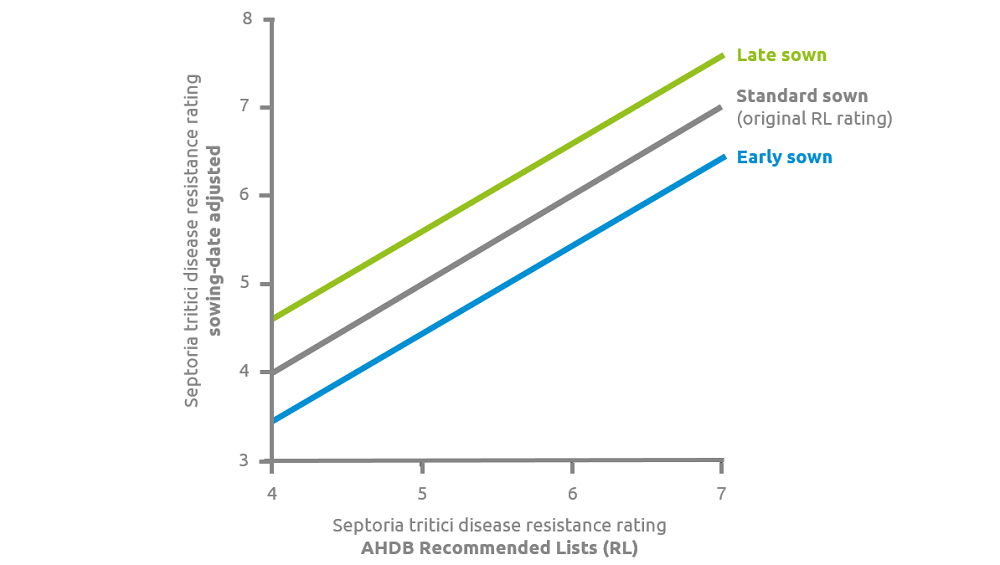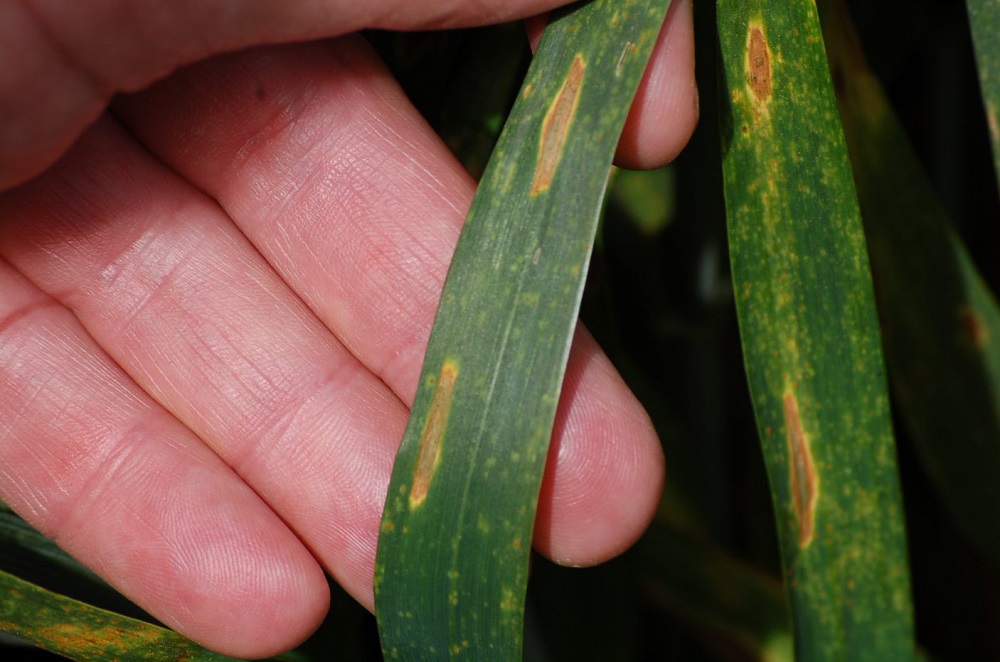How drill date affects septoria disease resistance ratings in winter wheat
Wednesday, 23 June 2021
By the time winter wheat flowers, the opportunity to manage foliar disease has largely passed. Inevitably, focus turns to the assessment of control success and the identification of improvement points (for next time around).
With new research results showing how septoria disease resistance shifts in response to drilling date, Robert Saville, AHDB Crop Protection Scientist (disease), looks at what it might mean for control in 2021–22.
Septoria tritici in winter wheat
Fungicide programmes for winter wheat
2020–21 septoria season (to date)
In our Recommended Lists (RL) wheat trials, growth stages 60–80 represent the final chapter in foliar disease assessment. By this time, disease has had plenty of time to take hold, spread and result in symptom expression. As all chlorosis and necrosis attributable to disease is recorded, it keeps our trial operators particularly busy at this time of year.
How to score disease symptoms in wheat (video)
When it comes to foliar disease number one, 2021 has been a relatively low-septoria-pressure year (see 'disease update' section), so far. For example, our wheat fungicide margin challenge has found little evidence of this disease in plots. In fact, the ADAS-led team of assessors has not observed clear differences between the fungicide-treated and untreated plots, including in septoria-susceptible varieties in the West of England. The dry April appears to have checked disease progress, despite rainy spells during May (which help splash septoria up the crop). May was relatively cool and this appears to have slowed down septoria’s pace.
In winter wheat, the T2 spray timing is crucial for septoria control. The top two leaves contribute about 65% to yield, so responses at this spray timing are usually the most profitable. Because of the relative importance of this spray, it is unsurprising that – unlike T0 – competitors opted to use fungicides at this timing. With the loss of chlorothalonil in 2020 and a new product (and mode of action) on the market in 2021, it is interesting to see the range of responses to T2 in 2021. Which tactic was right? Only time will tell.
Disease update
Since the initial publication of this blog, in general, conditions at the end of June generally favoured septoria. It will be interesting to see the next update from the wheat fungicide margin challenge team to see how this period translates into visible disease symptoms.
Find out how the 60 fungicide challenge competitors are faring in 2021 (research page)
Fungicide performance data for new wheat product (Univoq) released (news item)
2021–22 septoria season (planning)
Earlier this month, we issued a fascinating new report. The ADAS-led work investigated the impact of sowing date, seed rate, variety choice and fungicide programme on the severity of septoria and wheat yield.
Combining agronomy, variety and chemistry to maintain control of septoria tritici in wheat (report)
The report delivers plenty to chew on, but I want to highlight the findings on the influence of sowing date.
It has long been known that earlier sowings are often associated with higher disease severity during the main yield-forming period, probably because crops are exposed to spores earlier in the season.
Through the 25 trials, conducted over five growing seasons, this work showed that this disease-pressure effect is consistent. The researchers also developed a model to quantify the impact of drilling date on the septoria disease rating published in the RL* (see graph, below).

- Late sown (green line) – average sowing date 20 October
- Standard sown (grey line) – average sowing date 7 October (RL disease rating)
- Early sown (blue line) – average sowing date 22 September
Compared with the RL ratings, on average, early sowing decreased the effective rating by approximately 0.6, whereas late sowing increased the effective rating by approximately 0.6 on the resistance-rating scale. For example, the effective rating for a variety with a RL disease resistance rating of 6 is predicted to be 5.4 and 6.6 for early-sown and late-sown crops, respectively.
Sowing-date decisions require a lot of evidence to be weighed up, including the disease element. However, this new information will help you to quantify crop-level risks, whenever your crop goes in the ground.
Finally, on a related point, the return of unsettled weather during the flowering period means head blight and mycotoxin risks need to be considered carefully. Don’t forget to use our rainfall-risk tool. This month, at present (23 June 2021), rainfall levels have been relatively high towards the southeast of England.
Mycotoxin rainfall risk tool for cereals (tool)
About the research
Final Project Report 634 Combining agronomy, variety and chemistry to maintain control of septoria tritici in wheat was prepared as part of a 68-month project (21120007) that started in August 2015. The work was funded by BASF and a contract for £196,026 from AHDB. Led by ADAS, the work also involved teams at NIAB and SRUC.
*The disease-resistance graph is based on the range of varietal resistance ratings (4.3–7) tested in the project.
 AHDB
AHDB

